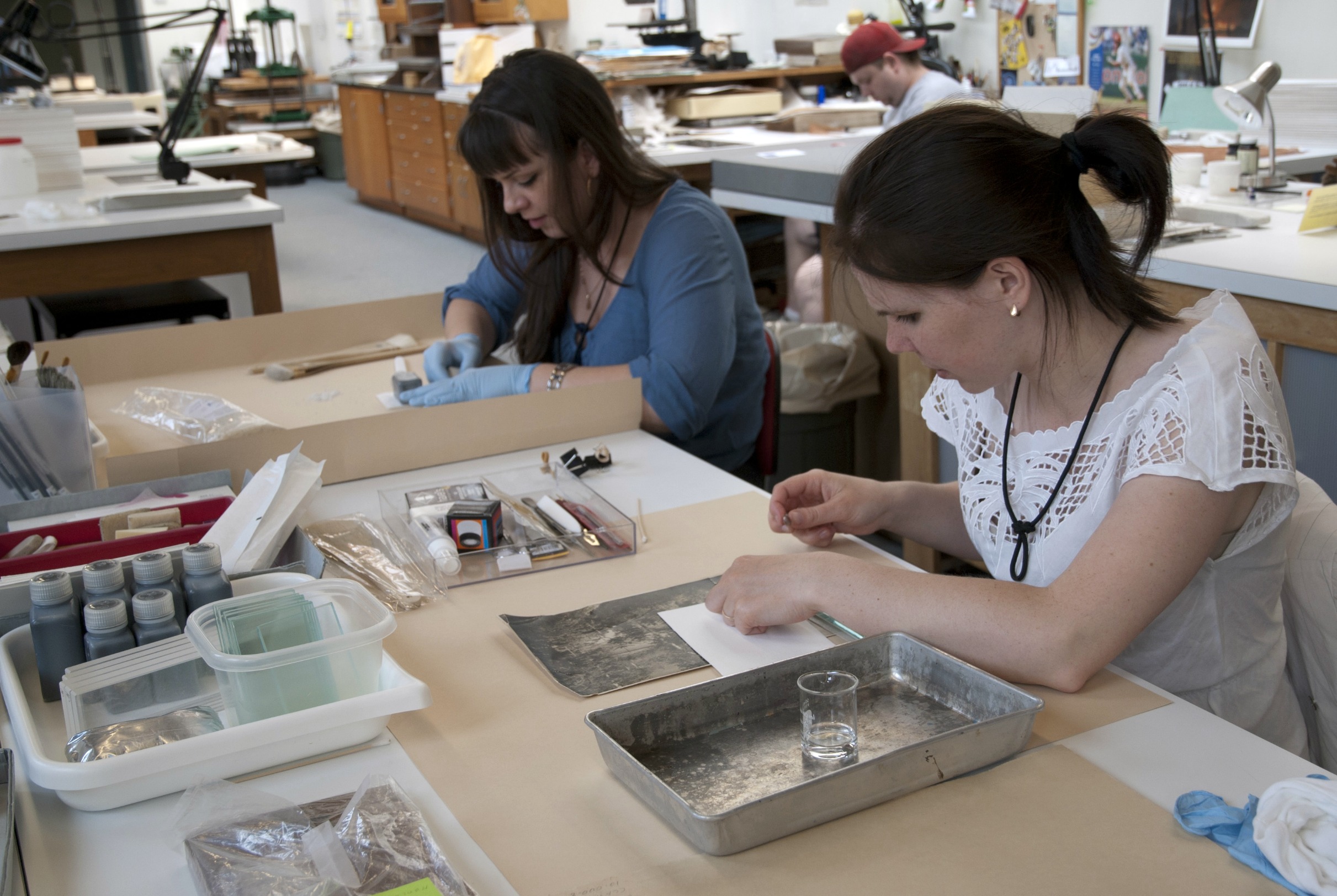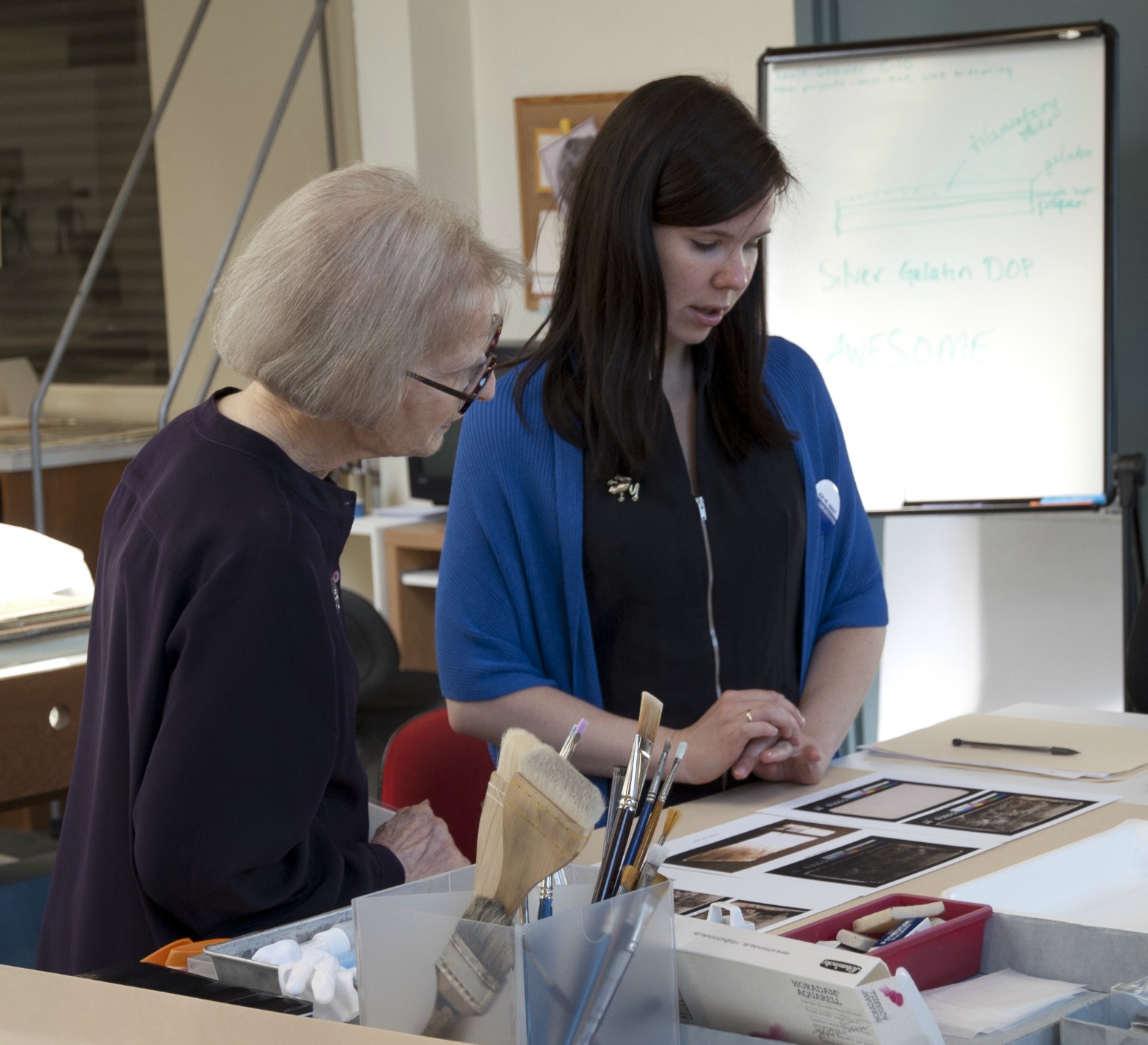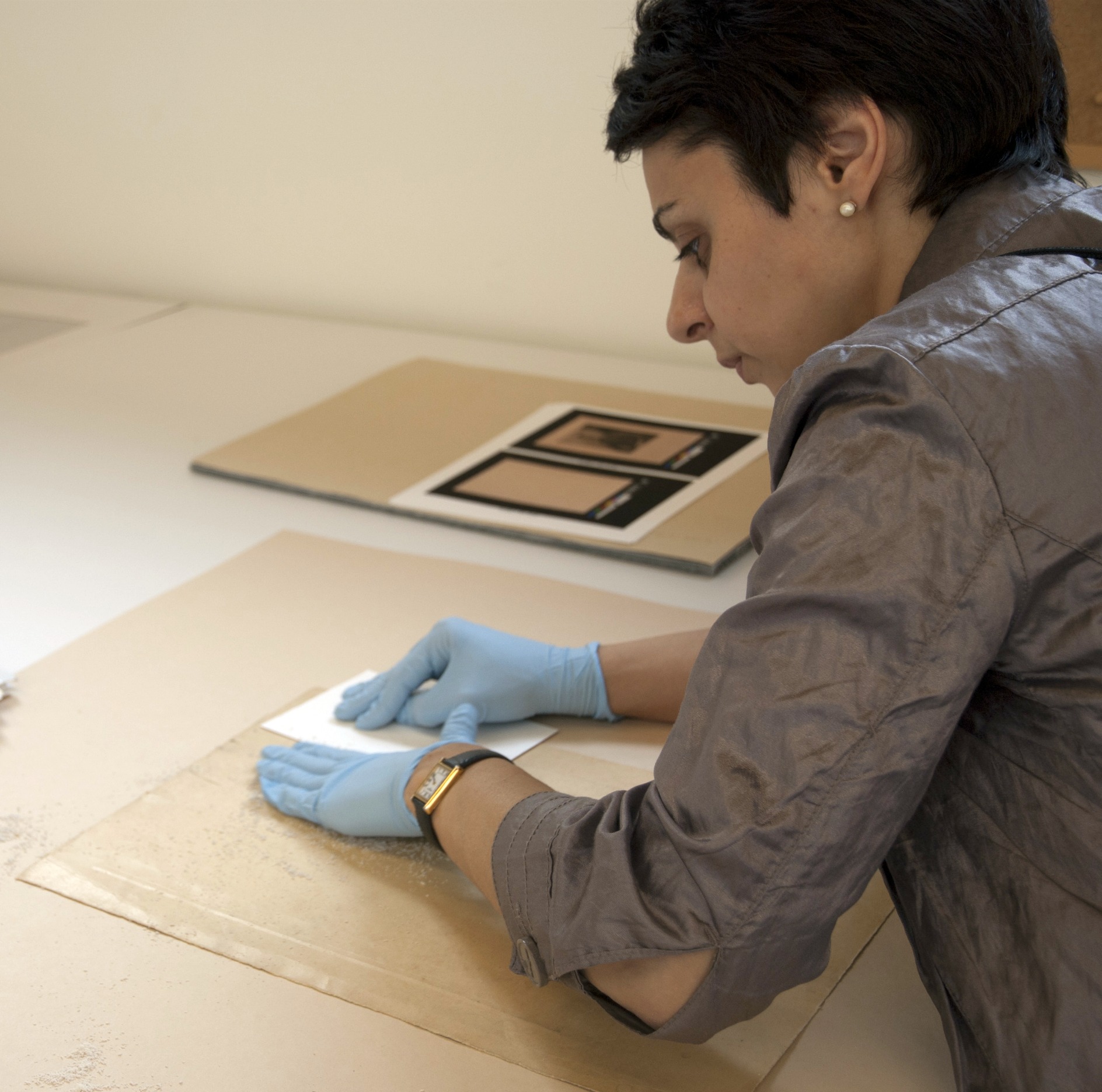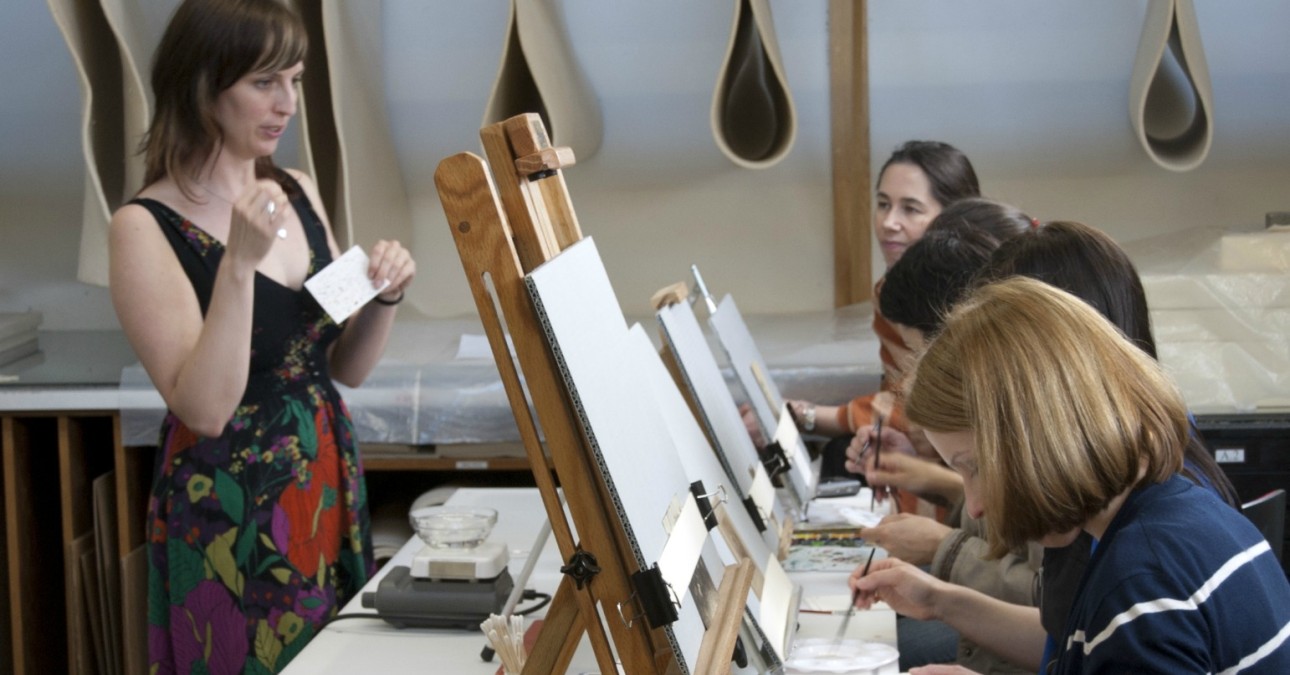
Treatment FOCUS: Training Russia's Photograph Conservators
CCAHA started the summer by welcoming visitors from the State Hermitage Museum in St. Petersburg, Russia. From June 9 to 17, Natalia Avetyan, Tatiana Sayatina, Natalia Laytar, and Evgeniia Glinka learned the basics of photograph conservation—a field that does not yet exist in Russia. Their visit was part of a four-year, $3.4million initiative funded by the Andrew W. Mellon Foundation and administered by the American Institute for Conservation of Historic and Artistic Works to establish a photograph conservation department at the Hermitage and to train department staff.

Evgeniia Glinka and Natalia Laytar treat 19th- and early 20th-century photographs from CCAHA’s study collection
Creating a new department (not to mention a new field) seems a daunting task, but these four women have experience in diverse areas of conservation as well as in transitioning between them. Laytar, who will work as a photograph conservator in the new department, treated paper objects at St. Petersburg’s Military Historical Museum before joining the Hermitage as a conservator of East Asian paintings. Glinka, also a future photograph conservator, designed stained glass before the Hermitage hired her to work in their organic materials conservation laboratory.

Sayatina, who will lead the conservation department, trained as an archaeologist. While on an expedition, Sayatina befriended a Hermitage staff member who eventually offered Sayatina her position when she left to start a family. For the past six years, Sayatina has treated wooden artifacts, found during excavations throughout Russia, Asia, and Crimea, in the organic materials lab.
According to Avetyan, it is common to learn a new profession at the Hermitage, a prestigious institution that hires based on recommendation just as often as on past work or study experience. She started at the Hermitage 20 years ago as a curator of negatives in the Archives and now serves as the curator of photography in the Department of Russian History and Culture. Avetyan will work closely with the conservators when preparing exhibitions highlighting selections from the department’s 45,000 photographs, the largest and most important collection in Russia.
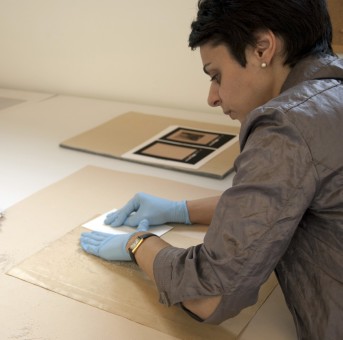
Natalia Avetyan surface cleans her project photograph
The Hermitage holds over 472,000 photographs total, in addition to more than 2.5 million paintings, graphic works, sculptures, archaeological finds, and other works of art from around the world. Avetyan, Sayatina, Laytar, and Glinka listed masterpieces by Leonardo da Vinci and Rembrandt, paintings on paper from Mongolia and Tibet, and 22 recently-purchased Roger Fenton photographs as a few of their favorite items—but it was, understandably, difficult to choose. Avetyan said that when her son visits her at work, they are sure to visit all three exhibits featuring his clear-cut favorite: the mummies.
CCAHA would like to thank Carmen D. Valentino Rare Books and Manuscripts and Barbara Lemmen (CCAHA Senior Photograph Conservator and a key organizer of this project) for their donation of the photographs treated during this project.
